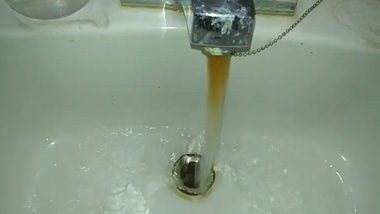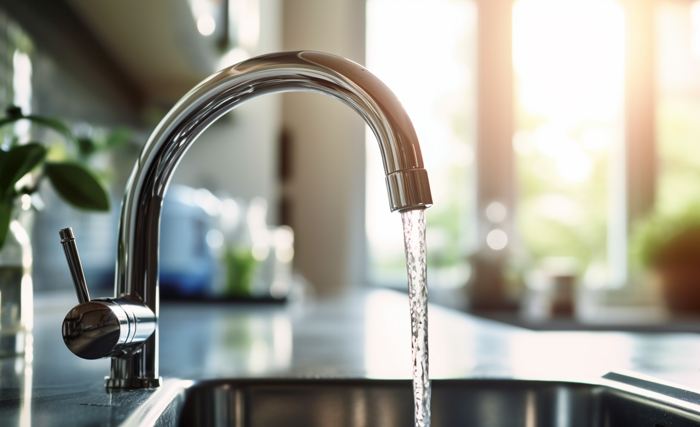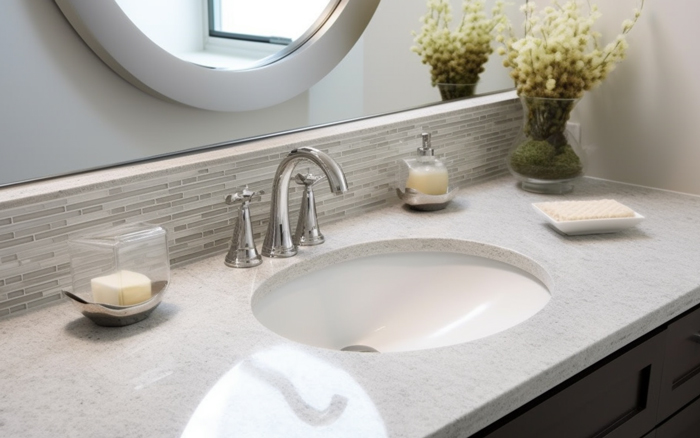It’s never a good feeling to turn on your faucet or flush your toilet only to see brown water coming out. It’s a concerning sight, but not an uncommon one. Be that as it may, you need to know the root cause to best fix the issue. So, the question is that what are the reasons behind brown water coming out of faucet and toilet?
We can attribute this to:
- Municipal water issues
- Rusty pipes and corroded plumbing
- High contents of iron
- Aging water heater (for hot water line)
- Reverse flow
Primarily, the disruption of water pressure is what stirs up rust and corrosion scales, which leeches into your water.
We’ll explore common causes for brown water and actionable steps to help you restore clear water to your home. In the end, we’ll provide tips for preventing the brown water problem.
Brown Water Coming Out Of Faucet And Toilet – Potential Cause and Solution

Let’s explore our list of potential causes and solutions for brown water coming out of faucets and toilets in the table below.
| No | Potential Cause | Applicable To | Solution |
| 1 | Municipal water issues | Municipal sources | Give the water time to run clear |
| 2 | Rusty pipes and corroded plumbing | Galvanized plumbing | Clean the pipes |
| Replace the pipes | |||
| 3 | High contents of iron | Private well source | Shock your well and install a water filter |
| 4 | Aging water heater | Hot water browning | Drain your water heater tank |
| Replace the sacrificial anode rod if rusty | |||
| 5 | Reverse flow | Water flowing back into the supply line | Install a vacuum breaker |
What Causes Brown Water Coming out of Your Faucet and Toilet?

Let’s explore the causes in detail and discuss the solutions accordingly.
1. Municipal Water Issues
Before you start fixing any issues, let’s first clear out other possibilities. This is the case if you rely on municipal water supply. Chances are that your town is doing routine fire hydrant flushing or there’s a water-main break. Either way, it will cause pressure fluctuations that stir sediments, leading to brown water.
Solution
Just to be sure, call your local water supply company regarding any ongoing maintenance work. Typically the brown water will run clear in a few hours following maintenance works. But in the event that it persists, explore our list of other potential causes and solutions.
2. Rusty Pipes and Corroded Plumbing
A study on water research points to iron release as the major cause of colored water problems. This iron leeches from rust and corrosion scale in your pipes.
Nevertheless, this should likely be a concern if you have an old home with galvanized steel or iron plumbing. For copper, brass, and PVC plumbing, explore other potential causes.

The following table highlights the lifespan of common plumbing pipe materials. It should give insight into when to replace your pipe. Be that as it may, the timeline between replacements may depend on the state of your water quality.
| Pipe Material | Lifespan (Years) |
| Brass | 40-70 |
| Copper | More than 50 |
| Galvanized steel | 20-50 |
| Galvanized iron | More than 40 |
| Cast iron | 75-100 |
| PVC | indefinitely |
Rusty lines may also explain isolated cases like “Why is my water brown in only one bathroom, or why is brown water in the bathtub only?”
The primary giveaway sign of rusty plumbing is a metallic water taste. Nevertheless, your pipes may also develop leaks in the case of severe corrosion.
However, a sure way is to do a pipe inspection. Shut off the water supply to your house and remove an exposed section of pipe from your plumbing. Check inside the pipe for rust and corrosion.
Solution
Your options are to clean the pipes or replace them altogether. Due to the costs involved, consider replacement only if corrosion is severe to cause cracks and leaks.
Oftentimes, these cracks provide leeway for mold and bacterial growth inside your pipes, not to mention water wastage. Whichever way you want to go about it, we recommend the services of a plumbing professional.
3. High Contents Of Iron
High iron concentration is likely the culprit if you get your water from a private well. According to a journal on “Iron In The Environment”, an iron concentration of 0.3 ppm is essential for water aesthetics and portability. More than that, your water may become discolored.
Moreover, high iron concentration in well water is often the result of a drop in the water table. During this time, the water becomes heavy with iron minerals, leading to brown water.
Another possibility is sediment and minerals flushed down into the well following heavy rain. However, this is only the case if your well is not properly sealed.

Solution
There are three types of iron in well water: ferric, ferrous, and bacterial iron (green rust). So, you want a mechanism that can deal with all these.
Your best bet is to first shock your well. The purpose of shocking your well is to remove bacteria and iron that a water filter will have difficulties filtering out.
This video shows how to shock your well using chlorine bleach.
After shocking your well, install an oxidizing water filter at the point of entry. But why install an oxidizing water filter instead of an ion exchange water softener?
The thing with an ion exchange water softener is that it just can’t handle high concentrations of iron. Excess iron makes your water-softener resin degrade faster. More often, it will remove more soluble ferrous iron, not ferric iron.
4. Water Heater Problems
If your hot water is brown but cold is clear, the culprit is your water heater tank. Sediments are more likely to build up inside the tank over time.
Also, hot water tanks have replaceable anode rods. It’s this rod that gets sacrificed for the longevity of your hot water tank. Typically, it suffers from mineral attack, causing it to rust instead of the tank itself.
As the water flows through your hot water tank and heats up, it stirs the sediment and rust, which make their way into your pipes.
Solution
The first option would be to flush or bleed your water heater tank. To do this:
- Step 1: Turn off the cold water supply to your hot water tank. Also, turn off the power or gas supply to the unit.
- Step 2: Hook a garden hose to the drain valve at the bottom of your tank. Open the valve and let the water run out until it’s clear.
- Step 3: If the water turns clear, use a wet/dry vacuum to remove residual sediment from the tank.
If flushing or bleeding the tank doesn’t work, it’s possible your anode rod is rusty and corroded. In this case, you need to replace it. Typically, the sacrificial anode rod needs replacement every 2-5 years depending on the manufacturer and your water quality.
To replace your anode rod:
- Step 1: Turn off the power and cold water supply to your heater.
- Step 2: Drain your water heater and locate the anode rod. It’s typically at the top of your tank and attaches to your hot water outlet.
- Step 3: Remove the anode rod by loosening the hex screw at the top with a socket wrench.
- Step 4: Slide in the new rod where the old one was sitting and tighten the hex screw.
- Step 5: Turn back the cold water supply and power the heater.
5. Reverse Flow
Though not a common phenomenon, water may flow back into your supply line due to faulty valves or a drop in pressure. That’s what we call reverse flow. Oftentimes, this sudden change in the direction of water flow may stir up sediments and rust in your pipes, leading to brown water problems.

Solution
Your primary option is to install proper backflow prevention devices in your plumbing system. An inexpensive yet effective option would be AVBs or atmospheric vacuum breakers. It seals off your water supply once the system loses pressure, hence preventing reverse flow.
Here’s a video to walk you through how to install a vacuum breaker
FAQs
Let’s answer popular questions related to brown water coming out of faucets and toilets.
No. Despite the unpleasant taste, rusty water is safe to drink. The only exception would be if you have hemochromatosis, a disorder of iron overload in the body.
Yes. You can bathe in brown water though it may not be a pleasant experience. The only issue would be to use it for laundry as it will stain your clothes.
The best home remedy is vinegar. Pour two cups of vinegar into the toilet or sink bowl. Let it sit for 20-30 minutes, scrub, and rinse.
Conclusion
Rusty pipes, high iron content, and water heater problems are the main culprits for brown water coming out of faucets and toilets. Municipal water supply maintenance may also be the cause. Nevertheless, it’s an issue that will fix on its own with time.
While brown water isn’t a health concern, it can be a nuisance. So, it helps if you prevent future occurrences. The best approach would be to install a water filtration system and upgrade to more modern materials like PEX or CPVC pipes.